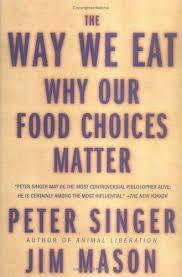The Snowdrops are in bloom in my garden and despite what the weather is really like this is a key indicator of the end of winter and my thoughts spring (no pun intended) to gardening tasks which set things up for the prime growing season.
In truth this area is one of the few in the world that can support the growing of food crops year round but my garden is not really set up for this. Last year I managed to clear an area down the side yard of my house. Although this area is south facing, because of the proximity of the neighboring house I have to wait for the spring before I get enough light to give plants a fighting chance. The yard itself currently has two raised beds which are about 2.5 ft x 6ft and I hope to clear out a bit more ground this year to get two more similar raised beds installed. I grow a lot of plants in containers, well buckets would be a more accurate description (Home Depot sell 5 gallon buckets for about $2) but last year I was surprised by the success I had and the amount of food I was able to harvest out of such a small Plot. My point is, that you really don't need to have a lot of space just the right combination of plants and enough sun and water to make them grow. The only tricky part is knowing what to plant and when. I took a community class last run by the
Master Gardeners of Santa Clara County and they gave me a wealth of information on what, when and how to garden in our area. You can find classes in the local paper or the community college pamphlets that come twice a year.
Planning for this years planting started back at the beginning of the year when I sowed seeds for many of the summer cropping plants. My tomato, pepper and basil were started under a grow lamp and moved to a indoor windowsill once they had got a few full leaves. Growing plants from seeds is by far the cheapest way to go and with a bit of planning up front really isn't hard. I simply sowed a few seeds in each pot then set them under the light. As the small shoots came up I thinned out each pot to one plant (just snipped the others off).
The tomato plants are already too big for the lamp box and were moved to a windowsill a couple of weeks ago they will be ready for planting out soon. The peppers and basil needed a little more time to develop but are catching up fast.
I also planted some peas, beetroot, chives and chard outside in a little polythene tented propagator. These required less heat to germinate and so could be sown outside in pots. They are also doing well and will ready for transplant into the main garden quite soon.
One new crop for this year is the potato. I decided that I missed the taste of freshly dug new potatoes just boiled in their skins and served with butter a traditional June treat in the UK. Growing them seemed the best way to get the freshest potato so I splashed out on some seed potatoes and they are currently sitting on the same windowsill as the tomato plants to enable them to sprout. A process in gardening parlance known as
chitting. Potato is a great crop for growing in containers. Back home in the UK my father would grow them in garbage cans. I have some deep sturdy bags that will do the job and hopefully by June will have a bumper crop of nice new potatoes. One thing about growing from seed is that you have to hedge your bets on yield and plant sow than you will eventually plant out. This might seem a waste but I can always find people who would like a few plants for their own and so I get to pass on my labors and let others benefit.
I am planning a couple of other projects for the garden this year. Firstly I am planning to use one of my new beds to grow a
"Three sisters garden" which is Native American method of planting Corn, beans and squash in a complementary manner which maximizes production in a small space. In a similar vein I am also planning a herbal garden once again influenced by Native American planting methods. In this case the garden is known as a
medicine wheel and I will blog about both of these planting methods in later posts.
The absolute best way to get the freshest vegetables is to grow them yourself. Why don't you give it try, you won't be sorry there are tons of resources out there and lots of people willing to help



![Reblog this post [with Zemanta]](http://img.zemanta.com/reblog_e.png?x-id=b29fc9d8-8adb-4058-8470-44fdc534c450)




![Reblog this post [with Zemanta]](http://img.zemanta.com/reblog_e.png?x-id=be964b50-47e4-4bf9-bb71-00c38441a1b6)
